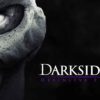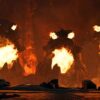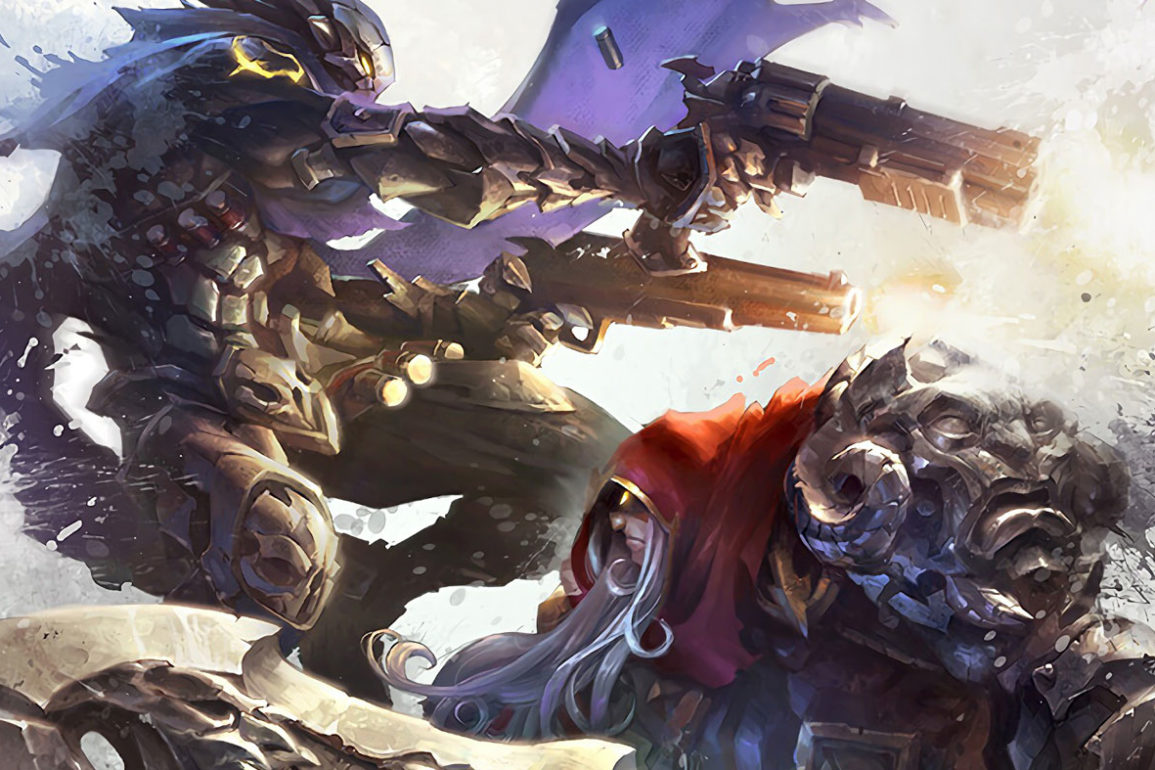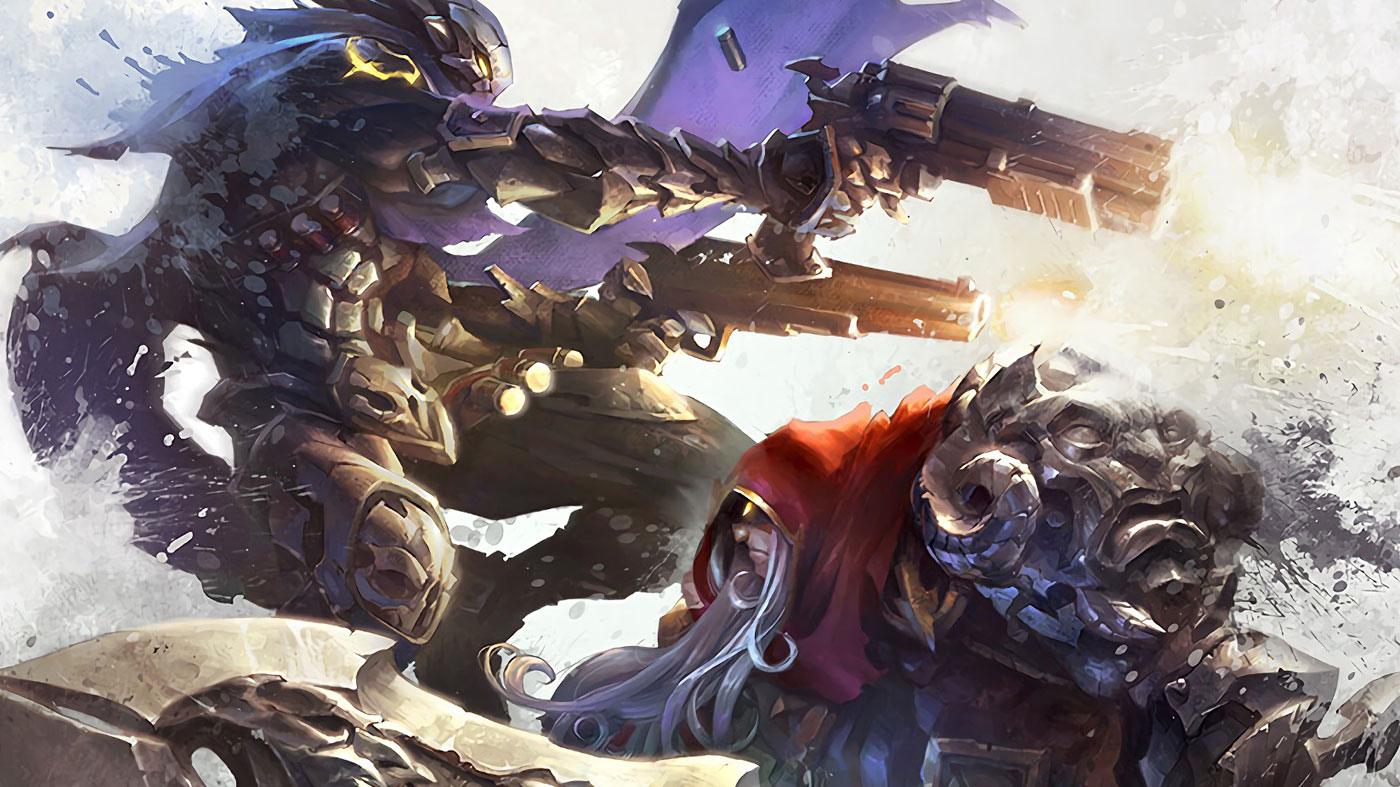Darksiders as a franchise is ever-changing. Each of them borrowing liberally from its contemporaries and yet still somehow being able to forge their own identity. At first glance, the latest, Darksiders Genesis, is the game that is different from the others. But on closer inspection, it’s clear that Darksider Genesis is the same tried-and-true experiences fans have come to expect. Still, such a drastic change is bound to come with growing pains, and unfortunately, Genesis isn’t exempt.
Darksiders Genesis, as you’d expect from the name, takes place before the events of any of the games. This time around you play as Strife but are joined by War in a plot to take down Lucifer and his lackeys, other demons, as they conspire to shift the balance in their favour. It’s a bit of a ho-hum story that I feel like I’ve played to death, especially in Darksiders games, but it does fill in some key story beats that mega-fans of the series will appreciate. It feels like the fanservice is flowing as a result – expect to meet some of your favourite characters here too, but younger as well as learn a bit more about War and Strife.
While I didn’t particularly enjoy the story of Genesis (honestly, I wish the Darksiders story would move on at this point) what I did enjoy was the dynamic between Strife and War. We’ve met War before, but to see his sterner personality be juxtaposed with the more playful and outgoing Strife is a fun partnership. The interplay between these two is almost what saves Darksiders Genesis narratively – you’ll see the two both develop as characters better than I honestly ever expected.
What I can’t help but wonder, however, is where Death and Fury are in all of this. This feels like the perfect opportunity to bring the characters together before what I can only assume is a big finale with Darksiders IV, but they’re glaringly absent. The game even brings attention to it, but it still doesn’t make it feel any better. Fury was the best thing about Darksiders III, and I sorely miss her presence in Genesis.
You’d be forgiven for thinking that Darksiders Genesis was nothing more than a Darksidery take on Diablo, but despite this new viewpoint and focusing on alternate encounter designs this still feels like a Darksiders game through and through. You won’t be endlessly grinding for loot or crawling dungeons aimlessly, but instead, you’ll be backtracking (largely optionally) to improve both War and Strife. I was pleasantly described to discover that most of the typical beats you’d expect the game to hit are here – there are some epic boss battles, some cool items to unlock and some exploration too.
There’s combat as well, as you’d expect, and earnest attempts to shake up the formula a bit. Strife fights mainly with guns, so a lot of his upgrades are different types of ammo with varying attack types and effects. Strife himself can’t block, but to compensate can increase his power by chaining together hits with his weapons. War uses different blades instead of guns, many of which come equipped with different abilities, as well as the ability to block too. Both styles are different enough to justify two separate characters, though your mileage may vary as to who you enjoy more.
When you’re not battling hordes (literally, hordes) of enemies you’ll be exploring, platforming and solving puzzles. The puzzles themselves are trite – if you’ve played a game with puzzles since 1998’s Ocarina of Time then you probably know what to expect. Platforming is especially perplexing as the camera gets in the way often, which is somewhat ironic as the new perspective if anything detracts from the experience rather than enhancing it.
When playing solo, you can switch between the two horsemen on the fly to change up your approach. Assuming that co-op is also an option, the game never really requires you to switch between the two characters beyond certain puzzles and a few boss battles. It really feels like a missed opportunity to capitalise on the unique move sets of both characters to offer some enemies that required true cooperation to take down. I suppose that’s my biggest issue with Genesis – it never fully capitalises on the elements that make it unique.
Such an issue is compounded by the fact that Genesis is repetitive and somewhat tedious. You can expect to continually do battle with the same types of enemies as you plod through the game. I was excited to discover new enemies as I progressed further into the game, only to discover they behaved in the same way and had just had their colours changed. It comes off as a little bit cheap and makes the game feel like a grind.
You can’t quite blame the developers for wanting to give us more Darksiders to play with, but the fact of the matter is simple. Darksiders Genesis is as long as your typical Darksiders game but doesn’t have nearly enough content as those games did. Most players can expect to get anywhere between twelve and fifteen hours out of their first run. There’s a more difficult new game plus mode, which features a new ending too, but only the most hardcore of the fandom would even be remotely interested.
Despite the issues I have with Darksiders Genesis, it’s hard to argue that it doesn’t look the part as a Darksiders game. The worlds are all vibrant and colourful and feel as if they fit right in with the rest of the games. The story is told mainly through text boxes and comic book style sequences, which have a great art style too. From a technical standpoint, things feel as if they could be a little better – console performance feels stuck at 30 frames per second while the Switch also appears to be rendering at a lower resolution. Still, a colourful art direction makes up for these shortcomings ever so slightly.
So, did this experiment pay off? It’s hard to say. Darksiders Genesis tries a few things differently but doesn’t quite live up to the expectations you might have when you hear the name, which is a bit of a shame.










